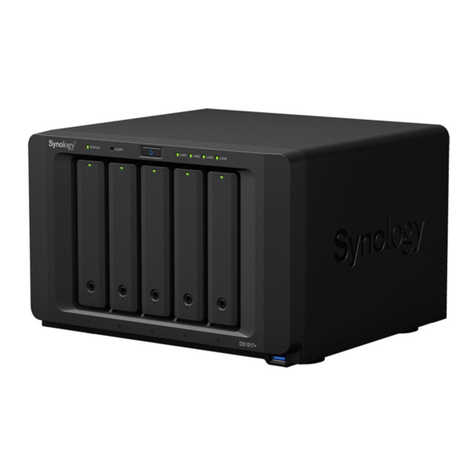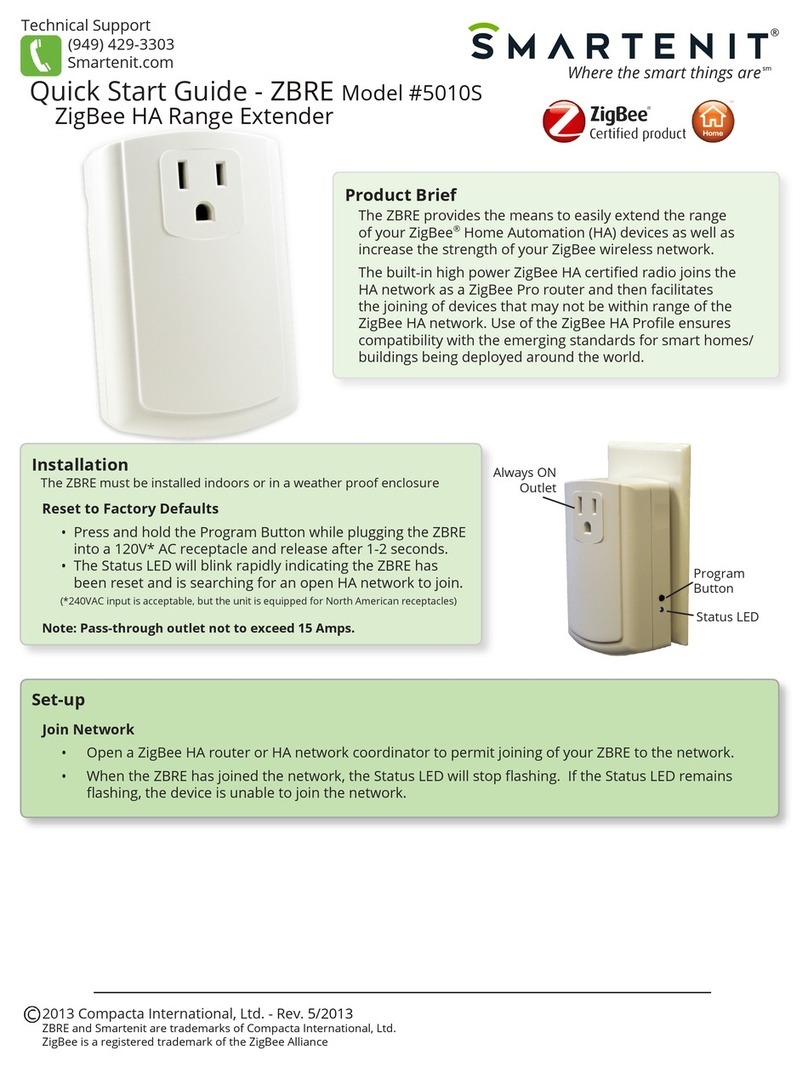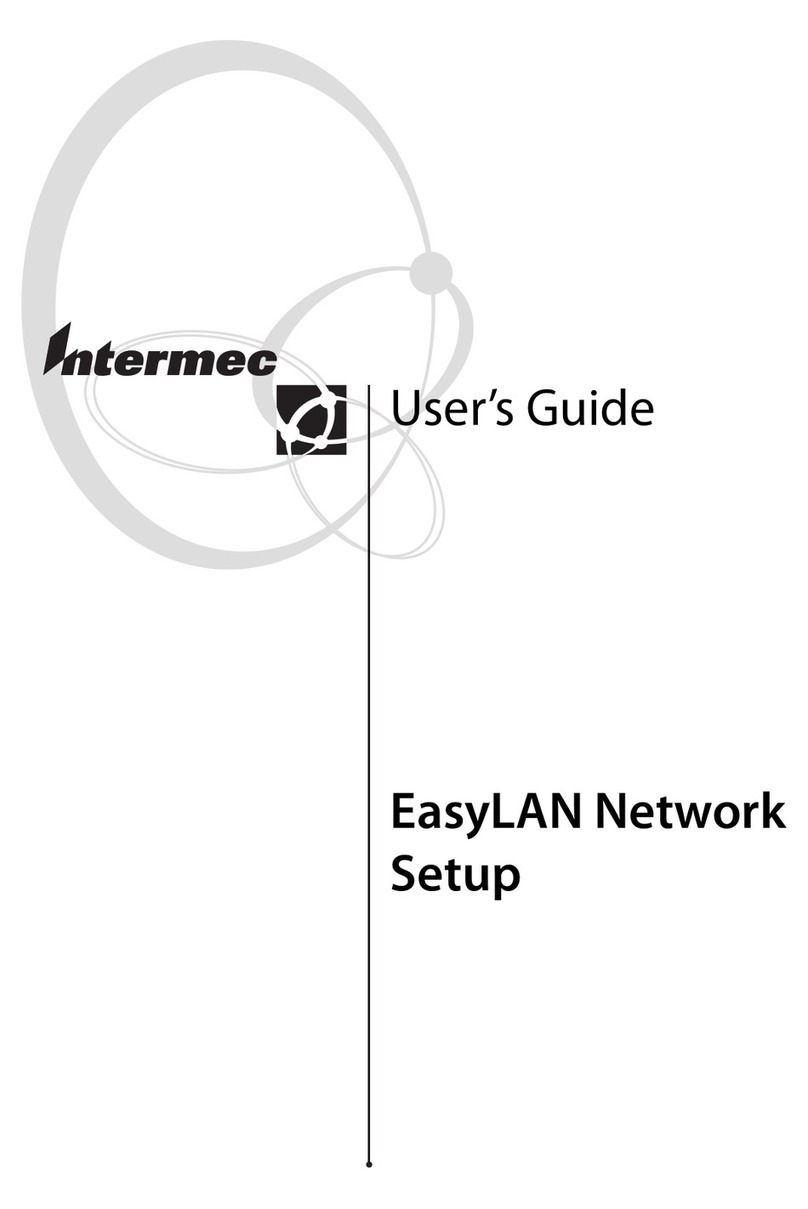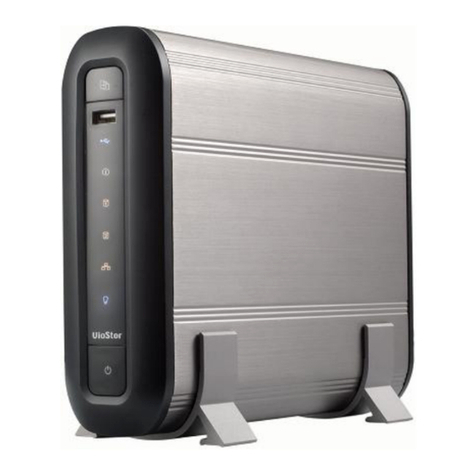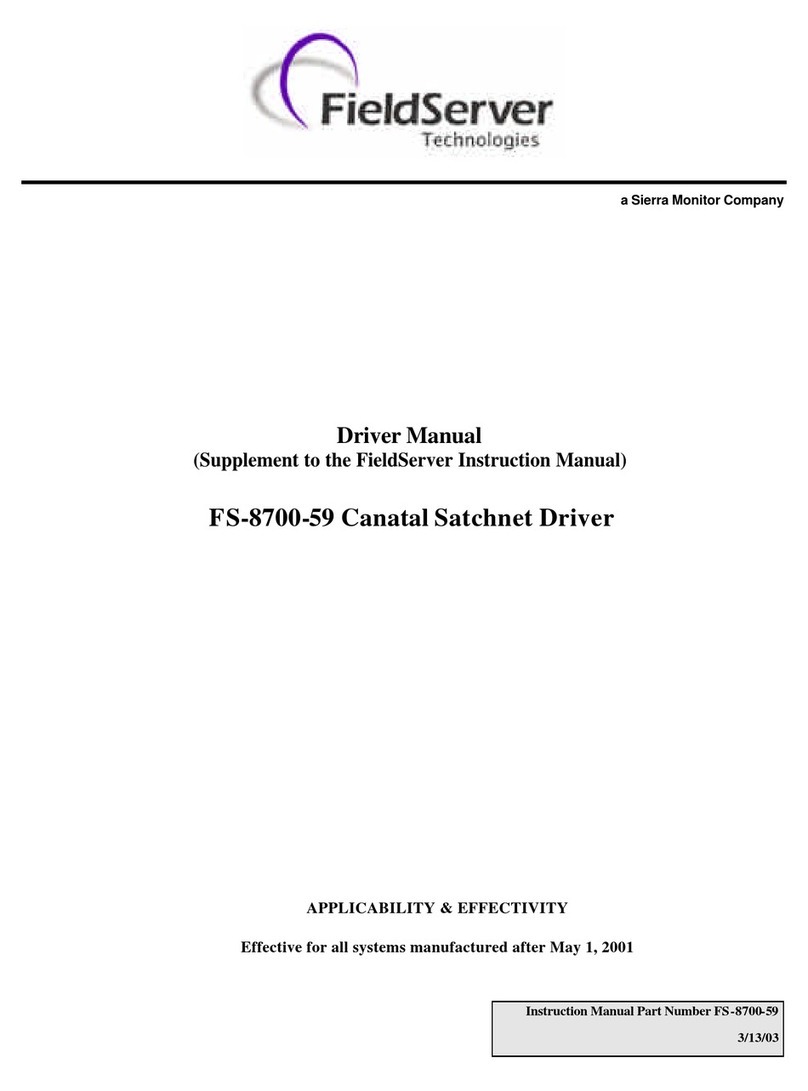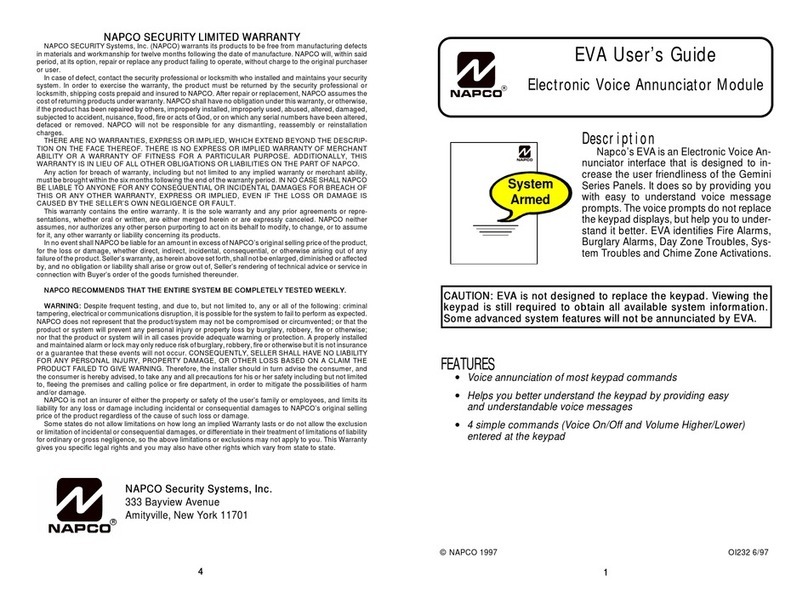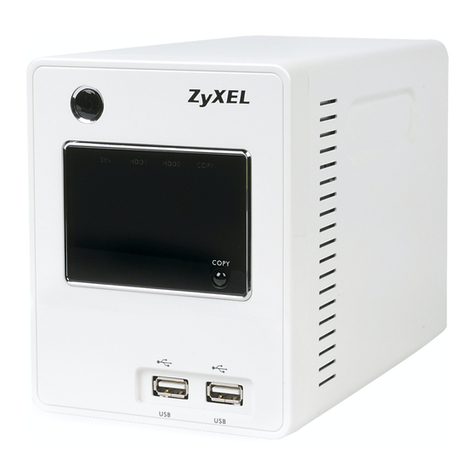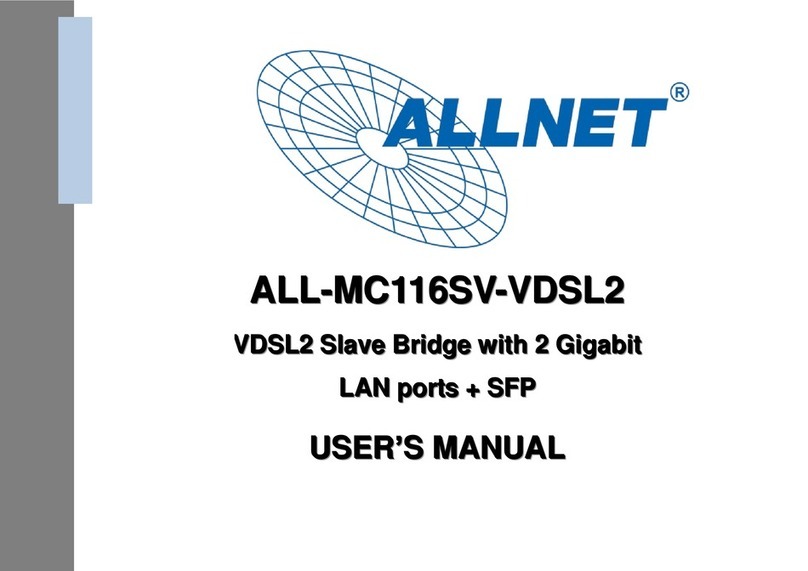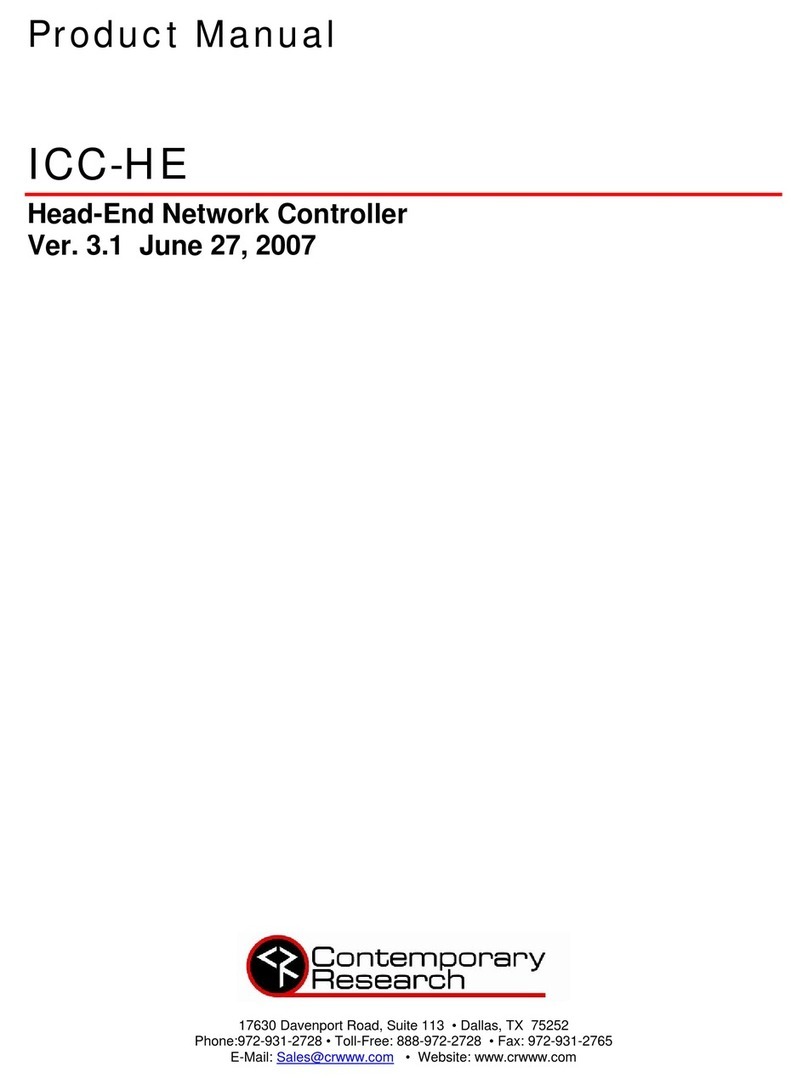B-G Instruments DataPlot CB1224 User manual

Page 1of4
ONE CONTROL BOARD: MANY PRINTERS
This control board accepts input data from a data interface,
such as parallel, serial RS232, etc. and provides the logic and
drive functions needed to operate B-G Instruments' DataPlot
print mechanism model numbers PM1224, PM1320, or
PM1416.The corresponding control board part numbers are:
CB1224, CB1320, or CB1416. Although it is possible to
convert one model control board to another by replacing the
program chip, that procedure should only be performed
by B-G Instruments or under its
direction. This document pertains to
all 3 control board models.
CHARACTER FONTS.
DataPlot printer models 1224, 1320,
and 1416 are able to print either
across the width of the paper
(x-direction) or down its length
(y-direction) in 5 different fonts, 4
different sizes of each font and 2
degrees of boldness. Two of these
fonts include both-upper and lower
case, subscripts and superscripts.
Font selections can be made by
software command or through an
attached keypad. Refer to another
data sheet entitled "Standard
DataPlot Character Fonts" for
examples and a complete discussion.
PRINT/PLOT COMMANDS
Printing in the x-direction is done much as on most printers;
send the desired characters followed by a CR ($O D). DataPlot
printers are also able to print in the y-direction and plot high
resolution curves, bar charts, etc., addressing individual dots
and groups of dots as necessary. For a complete description of
these functions and the commands used to invoke them, refer to
anotherdata sheet entitled "Standard DataPlot Commands".
GENERAL DESCRIPTION
This control board is based on an 80C31 microprocessor with
a complement of other CMOS chips. It provides for both
parallel and serial digital input, a battery-backed
clock/calendar, and interfaces for a keypad and a paper
take-up reel. For analog inputs and other special applications,
a daughter board can be attached with full access to the
microprocessor data bus.
MATING CONNECTORS
The stepper motor (J1) and printhead (J3 or J4) mating
cables are supplied by B-G instruments. Other mating
connectors are:
For J7: T&B Ansley 609-2000M or equivalent.
For J8: T&B Ansley 609-1400M or equivalent
For J9: T&B Ansley 609-2000M or equivalent
For J10: Molex 22-01-3077 housing, 08-50-0114 terminals
For JP1 & JP4, Aries ML100S or equivalent
DataPlot Control Board
Models CB1224, CB1320 and CB1416
Technical Data and Instructions
Release B, March 15, 2000

Page 2of4
CONNECTING TO PRINT MECHANISM
As shown in the Interface diagram, this control board
connects to the print mechanism it drives through 2 cables.
The 8-pin plug attached to the stepper motor connects to J1.
The supplied 26-pin printhead cable connects to J3 or J4.
Use J3 to connect to PM1224 or PM1416 printhead.
Use J4 to connect to PM1320 printhead.
PAPER ADVANCE
The PAPER ADVANCE signal is a line available at pin 20 of
J7 and pin 1 of J9. It is pulled-up onthe logic board. To
advance paper, ground this line or drive it low through a TTL
driver. Paper can also be advanced or reversed a specified
number of steps by software command. See the "Standard
DataPlot Commands" data sheet for a full description.
PARALLEL INTERFACE-J7
The parallel data input is on connector J7 and includes 8 data
lines (bits 0 through 7), a STROBE* line to the printer and a
BUSY output line from the printer. The data lines are positive
true TTL logic. The STROBE* line is normally high. When a
STROBE* pulse is put on this line, its trailing (rising) edge
causes the data to be read and BUSY to be set high. (See the
timing diagram.) After BUSY returns low, the print can
accept more data. The polarity of the
BUSY signal can be inverted to
BUSY* by changing a jumper on JP4,
as shown at the left. Pin assignments
are:
Pin
Signal
1BUSY
3STROBE*
5bit 0
7bit 1
9bit 2
11 bit 3
13 bit 4
15 bit 5
17 bit 6
19 bit 7
PAPER
-
OUT SIGNALS
If the connected print mechanism is equipped with a paperout
sensor, the TTL signal out appears on pin 6 of J7. A high level
indicates paper-out; a low level indicates paper OK. In
addition, when the paper state changes from OK to out, the
printer sends a DC4 character ($14) via the serial interface.
When the paper state changes from out to OK, the printer
sends a DC2 character ($12).
In the standard DataPlot program, the paper state condition
is also used to inhibit attempts to print when paper is out and
to facilitate an autoload function when paperis inserted into
a powered-up empty printer.
INPUT DATA BUFFER
All characters received by the printer are placed in a FIFO
buffer which can hold 5120 characters. The BUSY condition is
signaled when the FIFO reaches 5088 characters. The READY
condition is again signaled when the F'IF'O drops to 5056 or
fewer characters. Additional buffers in the DataPlot program
are used to store characters for x printing, for y-printing and
for graphic grid storage. These are discussed fully in the data
sheets entitled "Standard DataPlot Commands".
HEX DUMP DIAGNOSTIC MODE
The HEX dump mode is established by holding down the "9"
key on the keypad ( or otherwise connecting pins 9 and 10 of
J9 together) while turning on the printer power. This mode will
remain selected Until power is turned off. While in HEX dump
mode, the printer will not respond normally to the data sent to
it, but will instead print
all received characters, in
hexadecimal, 16 bytes
per line. This feature is
often valuable for
troubleshooting an
instrumentsystem by
verifying the characters
actually received by the
printer.
POWER
-
ON DIAGNOSTICS
The printer automatically runs self-diagnostic tests when
power is turned on. If any errors are detected, the processor
will not complete its power-on initialization. In this condition,
the printer will not function, not even the paper advance
function. If, therefore, the paper advance function works, you
can assume that the power-on tests were completed normally,
without error.
Pin
Signal
2Ground
4Ground
6Paper Out
8Ground
10 Ground
12 Ground
14 Ground
16 Notused
18 Notused
20 Paper Advance

Page 3of 4
SERIAL INTERFACE
-
J8
J8 is a 14-pin connector that provides full duplex serial data I/O
to and from the printer. The format is RS232C with 1 start bit,
8 data bits, no parity and 1 stop bit. The baud rate as normally
shipped by B-G Instruments is set to 1200. This may be
changed to 2400, 4800 or
9600 by removing one or
both of 2 jumpers
installed on JP1, as shown
in the diagram at the right.
These jumpers aresensed
and the respective-baud
rate is established at
power-on, so that
changing jumper positions
after power on will not
change the baud rate.
Two serial protocols are available for sending data to the
printer; DATA BUSY and XON/XOFF. If the DATA BUSY
protocol is used, the host computer should monitor the state of
the RTS line before sending each byte. A high condition at the
connector indicates READY, while a low condition indicates
BUSY. When the printer changes from the READY state to
the BUSY state, it transmits the XOFF character ($13) via the
serial output. When it changes from BUSY to READY, it
transmits the XON character ($11). This enables the host to
implement the XON/XOFF protocol, eliminating the need to
monitor the RTS line. At power-on, the printer sends an XON
character to the host. After that, XOFF and XON characters
will be sent alternately, as required by the BUSY/READY
condition of the printer.
The standard printer program does not implement any
protocol for use of the XON, XOFF, DC2 andDC4 characters
in transmission from printer to host, ie., the printer assumes
the host is always ready to receive the characters. In custom
applications, the printer can be programmed to use this
protocol or to monitor the DSR line to determine the
readiness of the host to receive data.
The following lists the serial interface pin assignments on J8.
This pin out is such as to match the standard 25-pin RS232C
"D" connector when connected via ribbon cable:
J8
“D”
Signal
Pin
Pin Name Meaning & Direction
32TDX transmitted data from printer
5
3RXD received data to printer
7
4RTS ready to send from printer
14
20 RTS “ “
11
6DSR data set ready to printer
13 7Signal gnd common return
KEYPAD
INTERFACE
-
J9
Connector J9 includes 8 sense lines and 8 drive lines which
may be used for various switching, sensing and output
functions in a custom application program. In the standard
DataPlot program, 4 of the sense lines and 3 of the drive lines
are used to interface a 3x4 matrix keypad, which may be used
to set and read an optional clock/calendar in "application”
mode and for various test and font selection purposes in "test"
mode. These functions are described further under
"CLOCK/CALENDAR" and "SELF TEST PRINTOUTS" in
this data sheet and in the "Standard DataPlot Character Fonts"
data sheet, respectively.
The diagram at the left shows the jumper positions on JP1
that establish "TEST" and "APPLICATION" modes for the
keypad.
The diagram below and to the left shows the portion of the J9
interface that is used for a keypad and paper advance switch in
the standard DataPlot program. J9 also has 4 additional sense
lines and 5 additional drive
lines that are not used by
the standard program but
are available for use by a
special application program
that may need the additional
input and/or output lines. If
your printer has such a
custom application, refer to
its special documentation
for assignment of any
additional interface pins.
CLOCK/CALENDAR
If your printer is equipped with the clock/calendar option, there
may also be a custom application program installed in the
printer. If so, refer to the documentation that describes that
program to determine the clock function and the manner of
setting the time and date.
The standard DataPlot program also provides for setting and
reading the time and date by using a keypad that is
connected to J9 as described under "KEYPAD
INTERFACE" elsewhere in this data sheet. For such use,
the keypad must be in "APPLICATION" mode.
To set the clock, key in the date and time in the format:
MMDDYYhhmm, then press the E key. If the time and date are
valid, the clock will be set and started and the date and time
will be printed for verification. The date and time will then be
printed whenever the keypad is in "APPLICATION" mode and
the E key is pressed with no preceding numerical entry.

Page 4of 4
SELF TEST PRINTOUTS
With the keypad connected and the keypad mode jumper
removed, pressing key "1" or key "2" will cause test patterns to
be printed in the x and y-directions respectively, using the
currently selected font, size and boldness. See the "Standard
DataPlot Character Fonts" data sheet for how to select other
fonts, sizes, boldness and print orientation using the keypad.
Refer to the "KEYPADINTERFACE" section of this data
sheet for keypad pin out information on connector J9.
PTU INTERFACE-J6
The 4-pin connector J6 is used for driving a Paper Take Up
assembly to automatically re-roll the printed paper. If your
system includes a PTU, connect its cable connector to J6 with
the red dot at the pin 1 end (marked on the board).
WARRANTY
B-G Instruments will repair or replace, at its option, any
DataPlot CB1224, 1320 or 1416 control board that
malfunctions within one year after the original date of sale,
provided that it is used only for control of the correct type of
DataPlot print mechanism and:
1. neither the control board nor the attached print
mechanism have been modified in any way not specifically
authorized in writing by B-GInstruments, Inc., and
2. electrical power supplied to the control board has always
been within the specifications given in this document, and
3. the control board shows no evidence of electrical,
thermal or mechanical damage.
B-G Instruments, Inc.
13607 E. Trent,
Spokane Valley, WA 99216, U.S.A
www.bginstruments.com
POWER REQUIREMENTS
-
J10
This control board requires + 5V + /-5% logic power at 300
mA and one additional higher voltage to drive the printhead
andstepper motor. This drive voltage depends on the model:
CB1224 +20V @ 3.0 amperes peak*
CB1320 +18V @ 3.4 amperes peak*
CB1416 +16V @ 4.5 amperes peak
* May be ordered for + 12V operation with some sacrifice in
maximum print speed. The drive voltage should be adjustable
over a + /-10% range about its nominal value to compensate
for normal differences in printhead resistance and for use as a
contrast control. The drive voltage must never be applied
before applying the + 5V logic power or when the + 5V is
outside its tolerance limits. Internal logic reset circuitry is
provided to prevent damage when the 2 supplies are energized
simultaneously. The + 5V supply must be free of spikes that
might cause the microprocessor to partially reset and
thereafter run improperly. The J10 pin assignments:
Pin 1
+5 volts
Pin 2 5 volt return
Pin 3 +drive voltage
Pin 4 drive voltage return
Pins 5 through 7 are not used.
Toll Free: (888) 244-4004
Phone: (509) 893-9881
Fax: (509) 893-9803
This manual suits for next models
2
Popular Network Hardware manuals by other brands
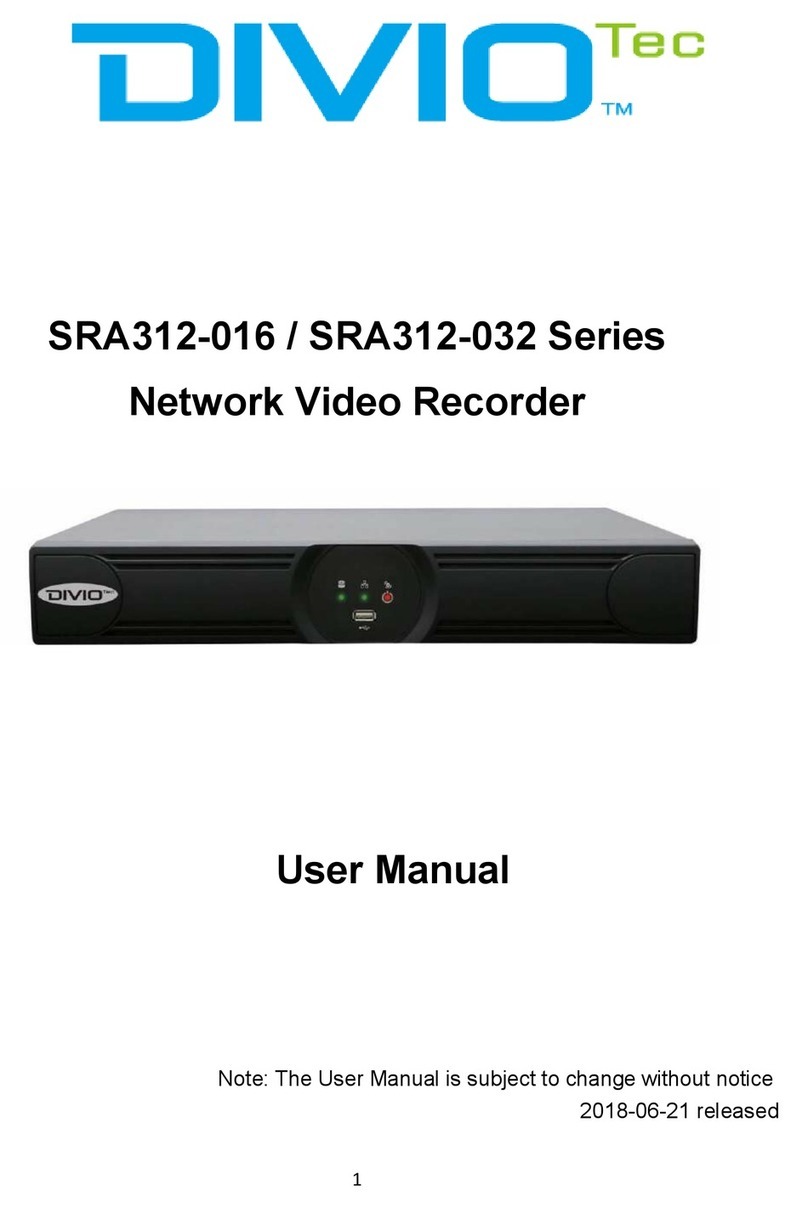
DivioTec
DivioTec SRA312-032 Series user manual
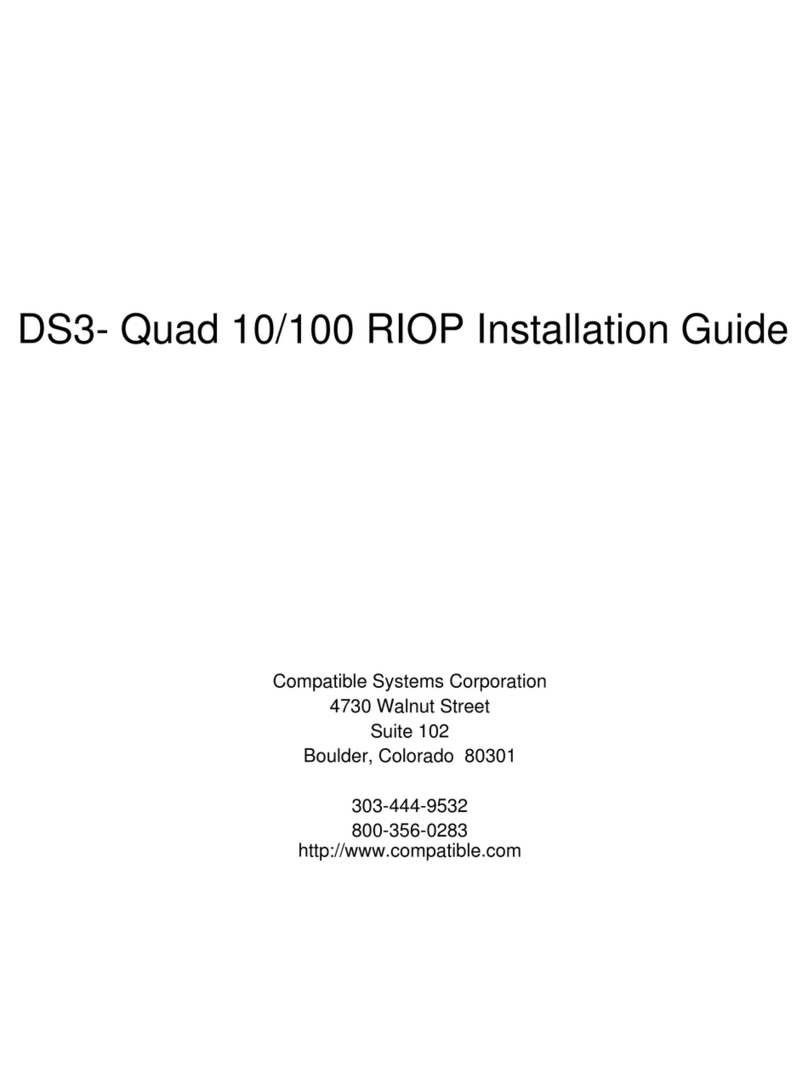
Compatible Systems
Compatible Systems DS3- Quad 10/100 RIOP installation guide
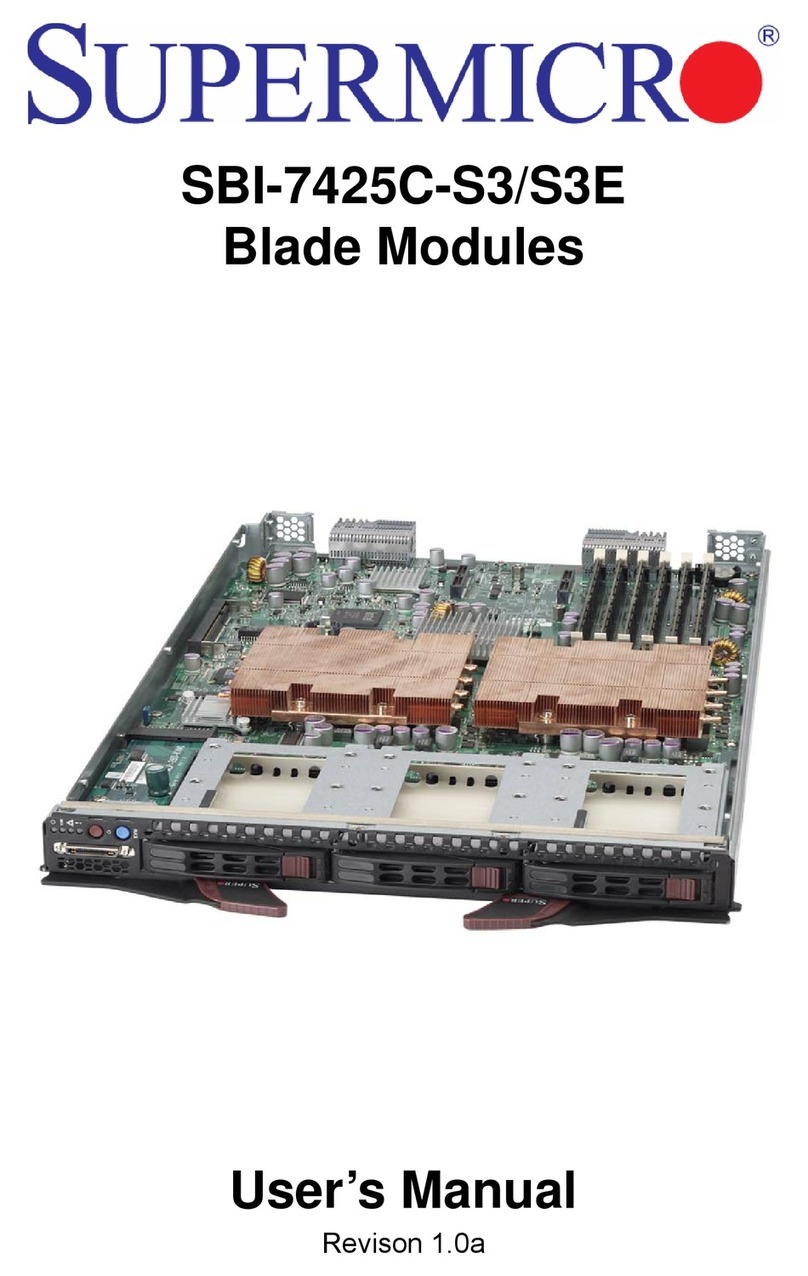
Supermicro
Supermicro SuperBlade SBI-7425C-S3 user manual
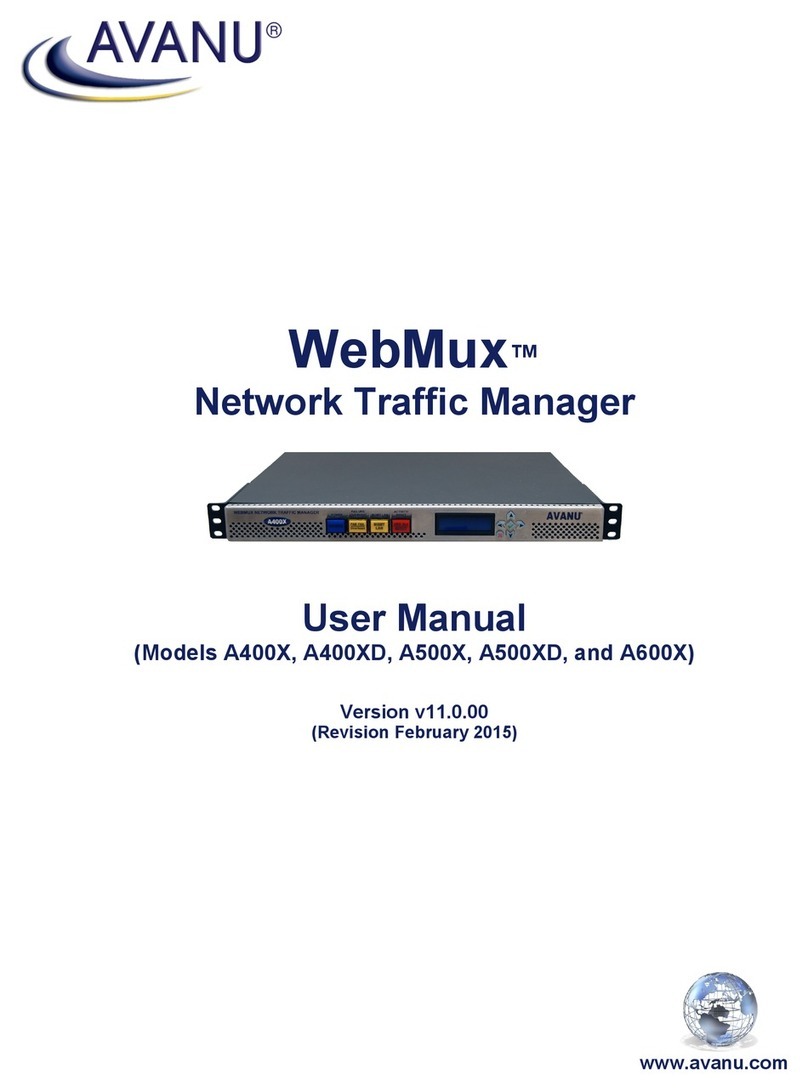
Avanu
Avanu WebMux A400X user manual
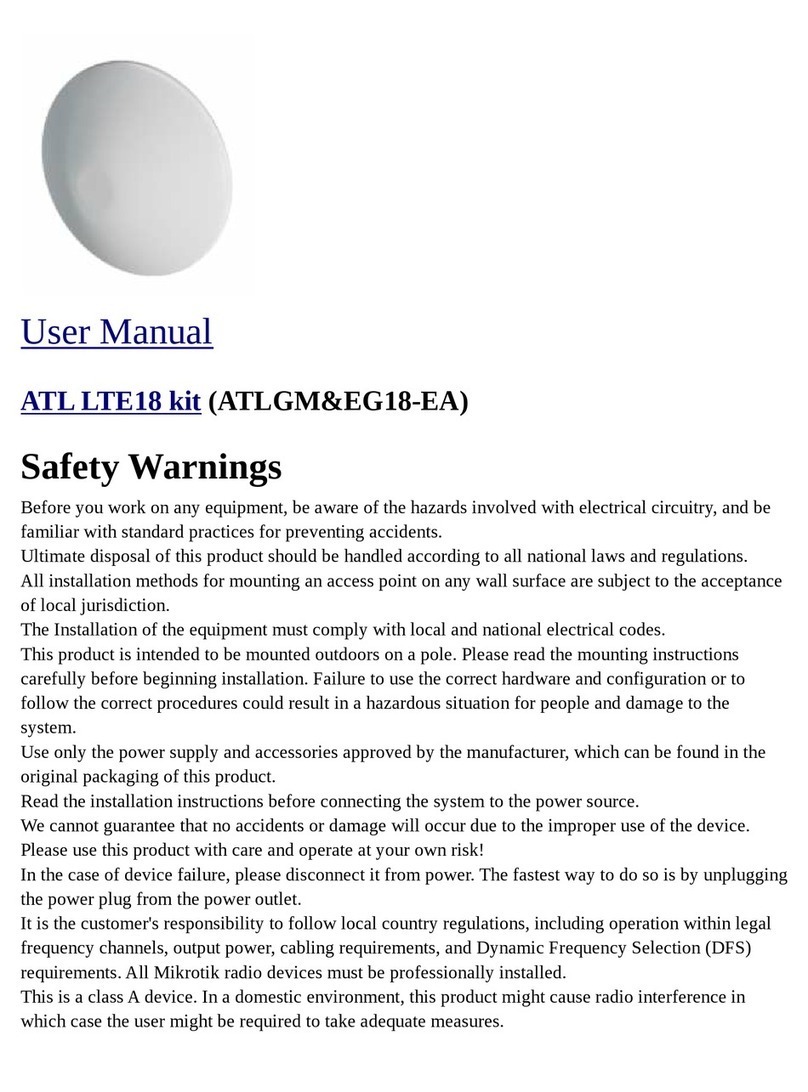
MikroTik
MikroTik ATL LTE18 kit user manual
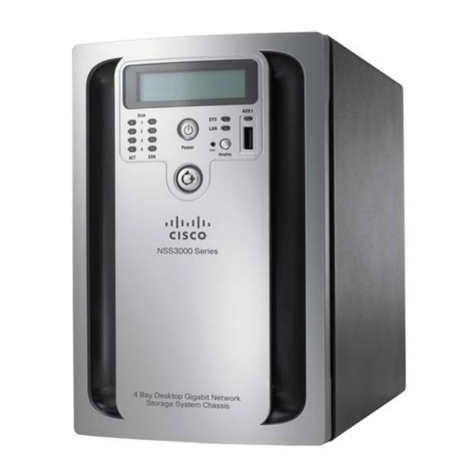
Cisco
Cisco Network Storage System NSS3000 Series Getting started guide
